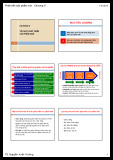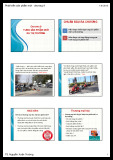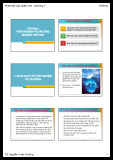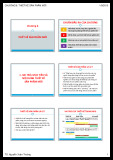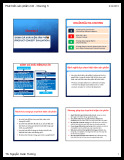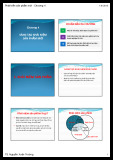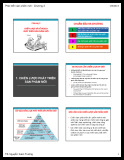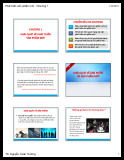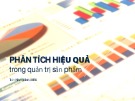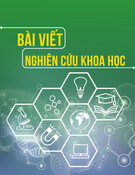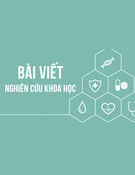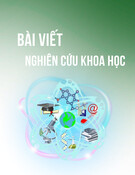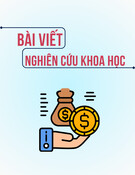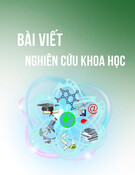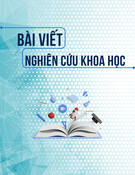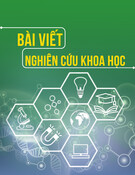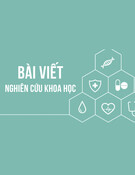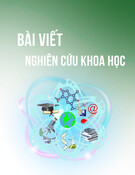
1/21/2018
1
Dinh Tien Minh, Ph.D
School of International Business - Marketing
Chapter 04
CREATIVITY AND THE PRODUCT CONCEPT
www.dinhtienminh.net
info@dinhtienminh.net
CHAPTER 04 OVERVIEW
4.1. Prepare for Ideation
4.2. The Product Concept
4.3. Methods for Generating Product
Concepts
4.4. Sources of Ready-Made New
Product Concepts
4.1. Prepare for Ideation
The Product Innovation Charter (PIC)
Finding the Right People
Management’s Role in Creativity
Activities to Encourage Creativity
Special Rewards
The Removal of Roadblocks

1/21/2018
2
4.1. Prepare for Ideation
Genius Thinking Strategies:
•Find many different ways to look at a problem.
•Make their thoughts visible.
•Produce.
•Make novel combinations.
•Force relationships.
•Think in opposites.
•Think metaphorically.
•Prepare themselves for chance.
Source: Michael Michalko, “Thinking Like a Genius,” The Futurist, May 1998, pp. 21-25.
4.1. Prepare for Ideation
Obstacles to Idea Generation:
•Group think
•Targeting error
•Poor customer knowledge
•Complexity
•Lack of empathy
•Too many cooks
Source: Jerry W. Thomas, “In Tough Times, “Hyper-Creatives” Provide an Advantage,” Vi
sions, 33(3), October 2009, 24-26.
4.1. Prepare for Ideation
Barriers to Firm Creativity:
•Cross-functional diversity: Diversity leads to more cre
ative stimulation but also to problem solving difficulties.
•Allegiance to functional areas:Team members need t
o have a stake in the team’s success, or won’t be loyal t
o the team.
•Social cohesion:If interpersonal ties among team mem
bers are too strong, candid debate may not occur, resulti
ng in less innovative ideas.
•Role of top management:Management should encour
age the teams to be adventurous, otherwise only increm
ental changes will occur.

1/21/2018
3
4.2. The Product Concept
4.2.1. Required Inputs to the Creation Process
Form
•The physical thing created, or, for a service, the set of steps by
which the service will be created.
Technology
•The source by which the form is to be attained.
Benefit/
Need
•Benefit to the customer for which the customer sees a need or
desire.
Technology permits us to develop a form that provides the benefit.
4.2. The Product Concept
4.2.2. Some Patterns in Concept Generation
1
•Customer need firm develops technology produces form.
2
•Firm develops technology finds match to need in a customer
segment produces form.
3
•Firm envisions form develops technology to product form
tests with customer to see what benefits are delivered.
The innovation process can start with any of the three inputs.
4.2. The Product Concept
4.2.2. What is a product concept?
A product concept is a verbal or prototype statement of
what is going to be changed and how the customer sta
nds to gain or lose.
Rule: You need at least two of the three inputs to have
a feasible new product concept, and all three to have a
new product.

1/21/2018
4
4.2. The Product Concept
4.2.2. What is a product concept?
Give examples
?
4.2. The Product Concept
4.2.2. What is a product concept?
• “Learning needs of computer users can be met by
using online systems to let them see training CDs on
the leading software packages.”
(good concept; need
and technology clear)
IS
• “A new way to solve the in-home training or
educational needs of PC users.”
(need only; actually
more like a wish)
• “Let’s develop a new line of instructional CDs.”
(technology only, lacking market need and form)
IS NOT
CONCEPT
4.3. Methods for Generating Product
Concepts
Two Broad Categories of Methods:
Gathering Ready-Made
Product Concepts
Using a Managed Process
Run by the New Products
Team

1/21/2018
5
4.4. Sources of Ready-Made New
Product Concepts
4.4.1. Best Sources of Ready-Made New Product Co
ncepts
New Products Employees:
•Technical: R&D, engineering, design
•Marketing and manufacturing
End Users: Lead Users
Resellers, Suppliers, Vendors
Competitors
The Invention Industry (investors, etc.)
Idea exploration firms and consulting engineers
4.4. Sources of Ready-Made New
Product Concepts
4.4.1. Best Sources of Ready-Made New Product Concepts
Miscellaneous Categories:
•Consultants
•Advertising agencies
•Marketing research firms
•Retired product specialists
•Industrial designers
•Other manufacturers
•Universities
•Research laboratories
•Governments
•Printed sources
•International
•Internet
4.4. Sources of Ready-Made New
Product Concepts
4.4.2. Toolkits & Crowdsourcing
Toolkits:
A set of design tools that customers can use to custo
mize a product best suited to them.
Can incorporate CAD/CAM or rapid prototyping.
Product configurators are a kind of user toolkit.
Crowdsourcing:
Open idea solicitation from customers.

